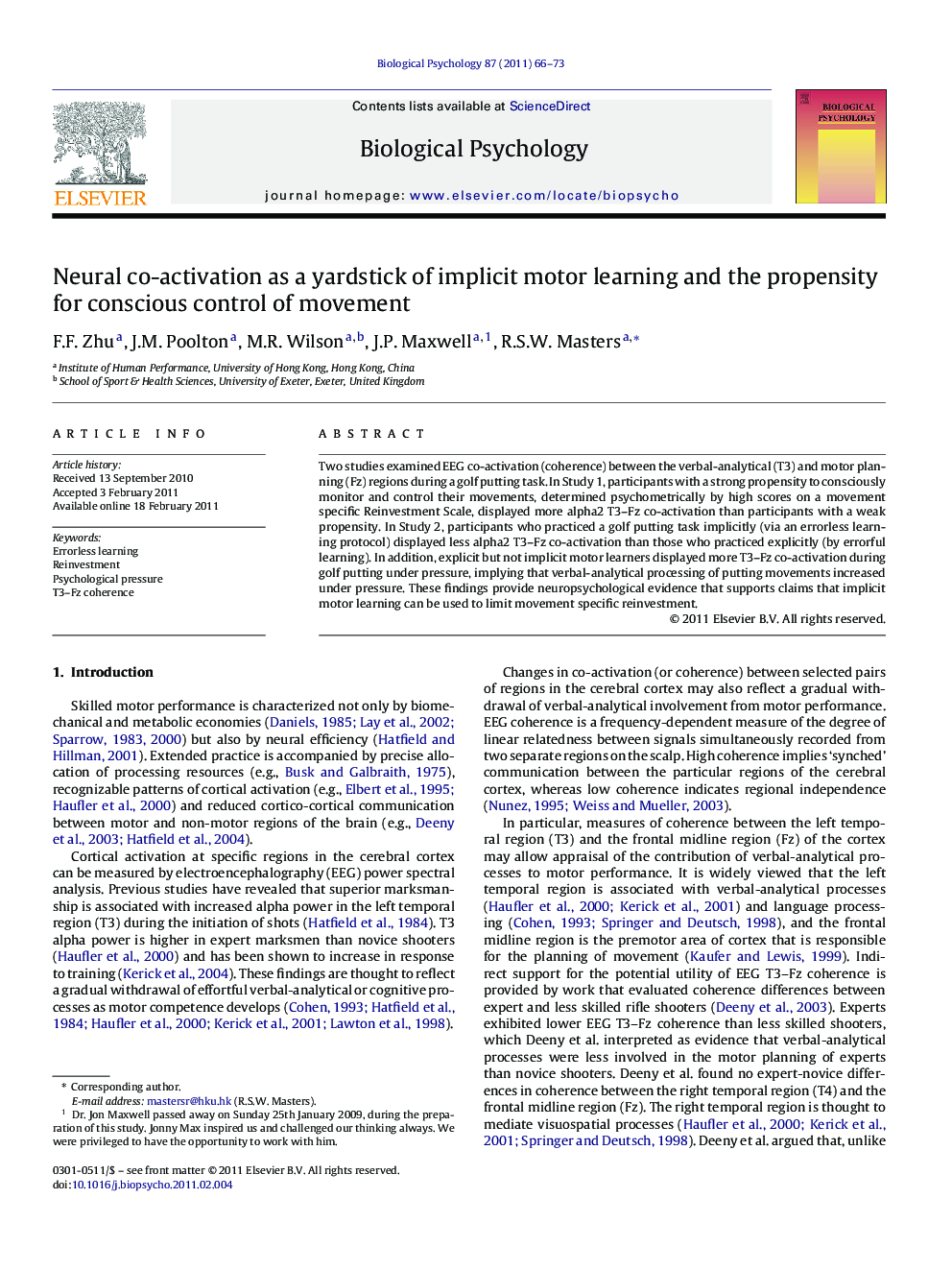| Article ID | Journal | Published Year | Pages | File Type |
|---|---|---|---|---|
| 921185 | Biological Psychology | 2011 | 8 Pages |
Two studies examined EEG co-activation (coherence) between the verbal-analytical (T3) and motor planning (Fz) regions during a golf putting task. In Study 1, participants with a strong propensity to consciously monitor and control their movements, determined psychometrically by high scores on a movement specific Reinvestment Scale, displayed more alpha2 T3–Fz co-activation than participants with a weak propensity. In Study 2, participants who practiced a golf putting task implicitly (via an errorless learning protocol) displayed less alpha2 T3–Fz co-activation than those who practiced explicitly (by errorful learning). In addition, explicit but not implicit motor learners displayed more T3–Fz co-activation during golf putting under pressure, implying that verbal-analytical processing of putting movements increased under pressure. These findings provide neuropsychological evidence that supports claims that implicit motor learning can be used to limit movement specific reinvestment.
Research highlights► T3–Fz co-activation reflects verbal-analytical involvement in motor planning. ► T3–Fz co-activation differentiates the propensity for conscious control of movements. ► Implicit motor learning promotes low T3–Fz co-activation. ► T3–Fz co-activation remains low under pressure in implicit motor learners.
